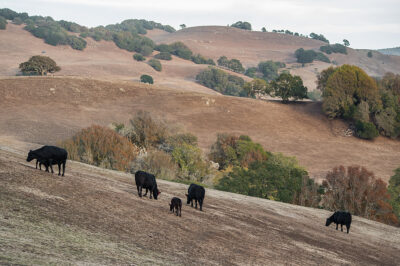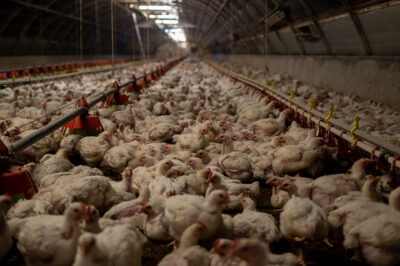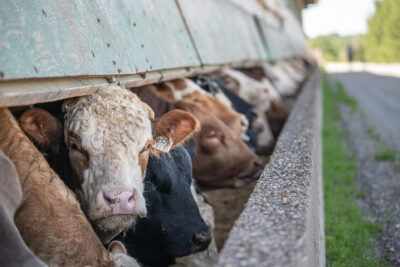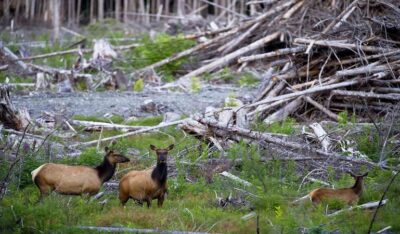When we imagine desertification, we are likely to picture something straight out of the movies: sprawling sand dunes in the global south stretching into the horizon. But desertification is a worldwide phenomenon, one closely linked to climate change and the way we use land, and it harms humans, animals, and ecosystems alike. To stop desertification, humans need to first understand the complex interconnectedness of the Earth, and create both large-scale and individual change.
WHAT IS DESERTIFICATION?
The terminology around desertification has been subject to scrutiny and debate between climate academics over the years. The term emerged in the mid-20th century to describe the Sahara Desert creeping into non-desert territory on the African continent as a result of human activity.
Today, though, the concept is far broader than sprawling sand dunes. The current definition, accepted by the scientific community, is “land degradation in arid, semiarid and subhumid areas, accruing from multiple factors, including variations in climate and human activities.” When the normally fertile soil in grasslands withers and becomes eroded and dry, when dust storms become more frequent, when food becomes harder to grow in the soil — that’s desertification.
Forms of desertification have existed throughout human history, although like other processes that are related to climate change, desertification has accelerated within the last few decades. According to the Joint Research Centre of the European Commission, 75 per cent of Earth’s land is already degraded in some way.
Around 40 per cent of the world’s population is currently experiencing negative effects from desertification, including drought, food shortages, and even forced migration. Regions especially vulnerable to desertification include the Sahel region of east Africa, Argentina, the western United States, the Near East, Australia, Mongolia and inner China, and more.
WHAT CAUSES DESERTIFICATION?
There is no single cause of desertification. Most regions of the world have a unique blend of factors that combine and interact to create desertification. However, there exist global overarching trends that can be seen as root causes.
DEFORESTATION
Deforestation is a process of removing plants, especially trees, to make room for human development.
Many people imagine that lumber mills are the principal cause of deforestation, but this is false. Agriculture, especially animal agriculture, is actually the biggest cause of deforestation, causing some 75 per cent of deforestation around the world. In rainforests especially, demand for beef drives the destruction — the creation of pasture to graze cattle is the primary cause of deforestation in the Amazon, with further damage caused by cultivation of soya, most of which is used to feed animals in factory farms around the world.
There are multiple reasons why deforestation leads to desertification. As forests are destroyed, the roots of trees and other vegetation are unable to hold the soil and keep it compact, leading to erosion. At the same time, the land is usually converted into agricultural land, which leads to more problems explained below. The lack of tree foliage can also increase the ground surface temperature and make the ground more arid as a result.
OVERGRAZING OF FARMED ANIMALS
Overgrazing of farmed animals is one cause of desertification. Land used for grazing animals, which include cows, sheep, and goats, comprises 26 per cent of ice-free land across the world. These animals, who have been bred to form unnaturally large herds by humans, may overgraze the vegetation, making it easier for the soil to erode. They may also harm local biodiversity, throwing ecosystems out of balance. Additionally, the gargantuan amounts of manure they produce can harm the soil, making it harder for vegetation to thrive.
In recent years, this has been scrutinised more by scientists, some of whom doubt how much the actual grazing process contributes to desertification. Advocates for the opposite view point to a study in Zimbabwe, in which a limited number of grazing animals actually helped reduce desertification by spreading seeds and tilling the soil naturally with their hooves. However, the number of farmed animals bred today is utterly unsustainable; it’s clear we need to significantly reduce their numbers in order to allow native wild animals to thrive in harmony with the environment.
Animal-based agriculture, including “regenerative agriculture”, takes up far too much land and is completely inefficient. Conversely, some estimate that switching to a plant-based food system would free up a chunk of land the size of Brazil and North America combined; even a partial 40 per cent reduction in the crops we feed to animals would allow us to feed a billion more people than we can right now.
There may be space for grazing animals as a climate solution, but the inherent unscalability of this idea means it’s not the silver bullet that some advocates claim.
OVERCULTIVATION OF CROPS
Overcultivating crops, whether they are used for animal feed or for human consumption, is a critical cause of desertification. Large swathes of land are tilled, ploughed, watered, and cared for in order to raise crops, but in excess these processes harm the soil and increase the likelihood of desertification.
The farming of crops, including the associated land and water usage, is far greater than it needs to be because of the huge areas dedicated to farming animal feed for the inefficient process of producing meat and dairy products.
INAPPROPRIATE IRRIGATION
Using nearby water is crucial for any farm or city, but excessive and poorly planned irrigation is a massive culprit for desertification, disproportionately affecting areas with variable rainfall. Agricultural irrigation is common in western and southern Asia, southern Europe, and other hotspots, like Suriname, Ecuador, and Japan.
Agriculture requires high volumes of water, and when local sources, like canals, lakes, or rivers are depleted, desertification can start creeping in. This can be exacerbated by periods of drought.
In one shocking example, Arizona residents have been left without drinking water because a large dairy farm has pumped the groundwater for its own use.
GREENHOUSE GAS EMISSIONS
As greenhouse gases like methane and carbon dioxide (CO2) are released into the atmosphere, they accelerate the warming of the planet, which alters cycles of rainfall and temperatures, and even causes extreme weather events like forest fires and floods.
HOW DOES CLIMATE CHANGE AFFECT DESERTIFICATION?
As the world warms, land erodes, and seabeds dry up, desertification increases. Changing patterns of rainfall, a consequence of climate change, can wreak havoc on drylands. A decrease in rainfall can cause soil to become dry, while an increase can cause it to wash away. Fluctuating rainfall is one aspect of climate change. The increased temperature from the sun’s rays also makes the topsoil drier, which can contribute to erosion.
WHAT ARE THE IMPACTS OF DESERTIFICATION?
LOCAL AND GLOBAL IMPACTS
Locally, desertification usually brings a loss of biodiversity, vegetation, water, and fertile soil. As ecosystems suffer, non-native plant and animal species may thrive, unexpectedly tilting ecosystems out of balance further. Dust storms emerge more frequently. Roads can become damaged. Plants lose their resiliency.
This also affects humans. Drought and reduced agricultural yields are common, creating hunger and forced migration. Certain countries have also suffered measurable economic losses, like Niger’s 11 per cent GDP loss or Argentina’s 16 per cent.
Soil is also a carbon sink, meaning it stores carbon. As soil erodes or dries out, it both reduces plant growth and releases CO2 into the atmosphere. This carbon contributes to global warming.
CLIMATE FEEDBACK
Unfortunately, as the effects of climate change ramp up, patterns of rainfall, forest fires, drought, and temperature all become less stable, creating a feedback loop that accelerates desertification. For example, as rainfall decreases in a certain region, the land becomes more arid and begins to erode, creating a desertified area. Then plant species begin to die out, releasing more carbon into the atmosphere, accelerating climate change — and the cycle perpetuates.
Climate change is also affecting human activity, driving cities to deplete water resources during times of drought or causing populations to migrate to other regions to flee environmental destruction.
HOW TO REVERSE DESERTIFICATION?
As one can glean from the list of causes of desertification, our system of agriculture is a major strain on Earth’s ecosystems. Any method of stopping desertification needs to include agricultural reform, and above all a systemic shift from animal-based to plant-based foods. Creating a sustainable food system, with less wild land converted to animal agriculture and less inappropriate water use would do wonders in reducing this problem.
Other initiatives, like planting trees or rewilding razed areas, are also useful in helping arid areas regain their fertility. Some specific projects include the Great Green Wall Initiative, a project to restore ecosystems across the African continent, and the Vegan Land Movement, a project rewilding fields previously occupied by animal agriculture.
CONCLUSION
All of Earth’s ecosystems are interconnected. When humans alter one tract of land — clearing too many plants, adding farmed animals, over-tilling the soil, using the water to irrigate for animal feed crops — we can feel the effects across the world.
Stopping desertification will require a concerted change to agriculture worldwide. Consumers can play their part by joining local initiatives to plant vegetation, supporting public policy that helps the environment, and reducing — or better still, eliminating — meat, eggs and dairy from their diets.





